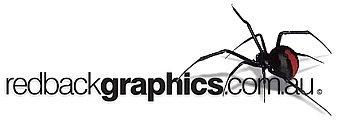If you have a Redback Graphics installed CMS website
To create a new gallery on a page
Select or create a page for your gallery. Edit that page.
Place your cursor where you would like to place the gallery on the page (eg. above or below existing text).
Click the “Add Media” button above upper left corner of the editing box.
Choose “Create Gallery” from options in top left corner.
“Upload files” from your computer or select images from the media library. Ideally images should be resized and optimised for web viewing, and for a consistent look it is recommended that images be a uniform size, eg 800 x 600px or 600 x 800, 1200 x 800 etc Unless you must have bigger images, 800px wide is max recommended. Then choose “Create New Gallery” (button bottom right corner). Once the images have uploaded to the page, you can rearrange images by dragging and dropping, then click “Insert Gallery” (button bottom right corner).
“Update” your page.
To add an image to an existing pre-installed gallery (with navigation/scrolling thumbs and arrows on the page) (Type A)
Login to your Dashboard, under “Dashboard”, click once on “Media”, then near “Media Library”, click once on “Add New” button. Choose “Select Files”, locate them on your computer, select the file (or multiple files), select “Open” (or hit enter), wait while it “Crunches” the file/s (uploads). At this point you can (not necessary) edit Titles, description, captions etc. This can be done at any time, so no need to do it right now. Then click “Save all changes”. You will then be back in Media and can see a list of the images now in your Media collection.
Any image/s you just uploaded (you can upload several images at a time) will not be “Attached” to any particular page. In order for them to appear in a gallery on “a” page, they must be “attached” to that page. Check the select box for all images you want to “attach” to a particular page, then click “attach” for one of those images (all images with a check/tick will ALL be attached to the same page that you now select). In the “Find posts or pages” box, type a few characters of the page name you are looking for, then select “Pages” and “Search” to locate the correct page you wish to attach those images to. Select that page, and you are done. The image will now be added to the existing gallery on that page.
To add an image to a normal gallery (no navigation/scrolling thumbs and arrows on the page, just thumbnails) (Type B)
Login to your “Dashboard”, click once on “Pages”, then once on the page your gallery is on.
Click once within the gallery area on that page, then the “Edit Gallery” icon. Click “Add to Gallery” button (on left), find or “Upload” the files to add, select the files, then update the gallery. While you are still editing the gallery you can drag and drop to rearrange images. Make sure you “Update” the gallery after making any changes.
Once back on the page, “Update” your page.
Tip 1
It’s always handy to have another browser window open to view the “public” side of your website to see the changes without having to log in and out of your Dashboard to see the public website. The changes will be live immediately. Use CTRL+F5 in your live website browser window to force a refresh of the web page you are viewing to see the updated image and link.
Tip 2
Always backup your website before doing any updates until you are very familiar with updating pages and images etc.
See backing up your website.
Tip 3
Adding descriptive Titles to your images will greatly increase your SEO (Search Engine Optimisation). If you name your images with an exact string that you might expect someone to “Google”, your image (and your website) will then rank highly in any Google results. Making the Title specific, but also unique will give excellent results. For example, if you were to name an image “twitter free zone”, then anyone Googling twitter free zone would quickly find your website. Your challenge is to predict what people be Googling (exact string), then include an image you can name accordingly. The more correctly named images you have, the higher the Google ranking for those strings will be. Do NOT try and trick Google by adding excessive images with blatant SEO Titles, Google will recognise that and blacklist your website completely. Just include relevant content, with relevant images with descriptive titles, and Google will love you, and people will find you.



